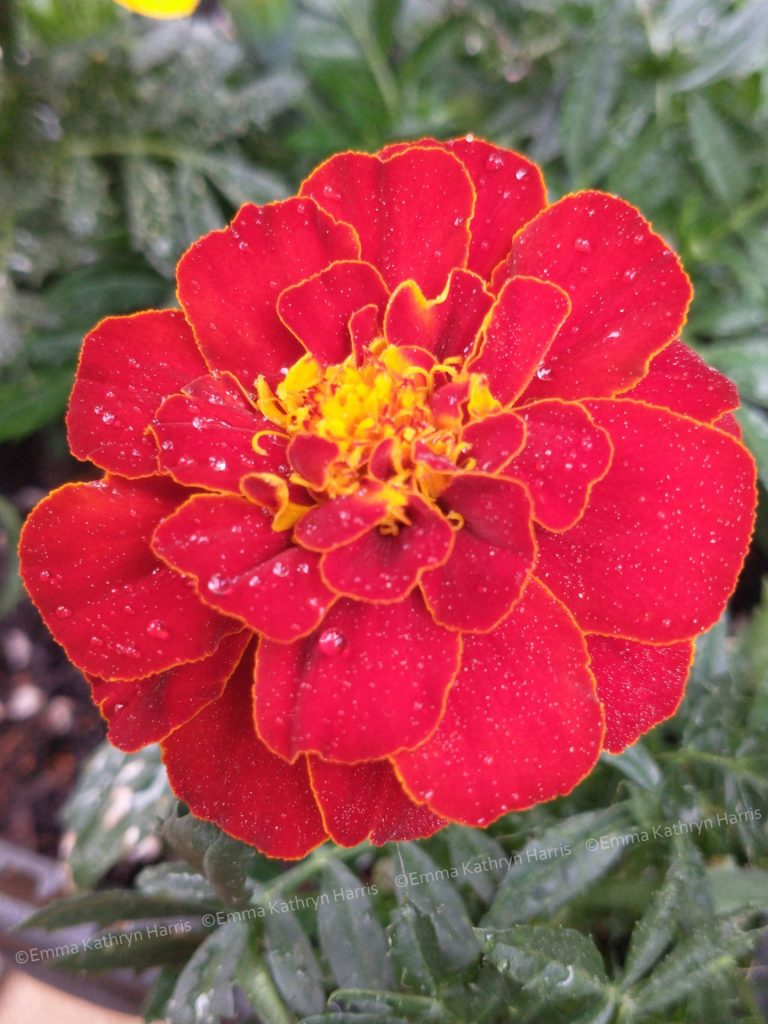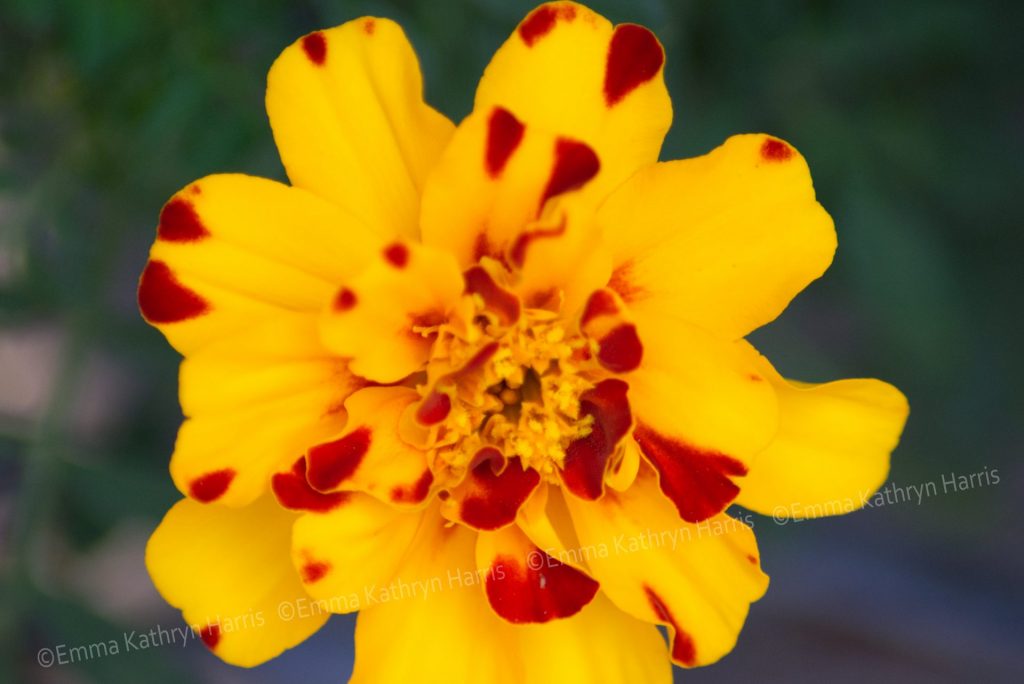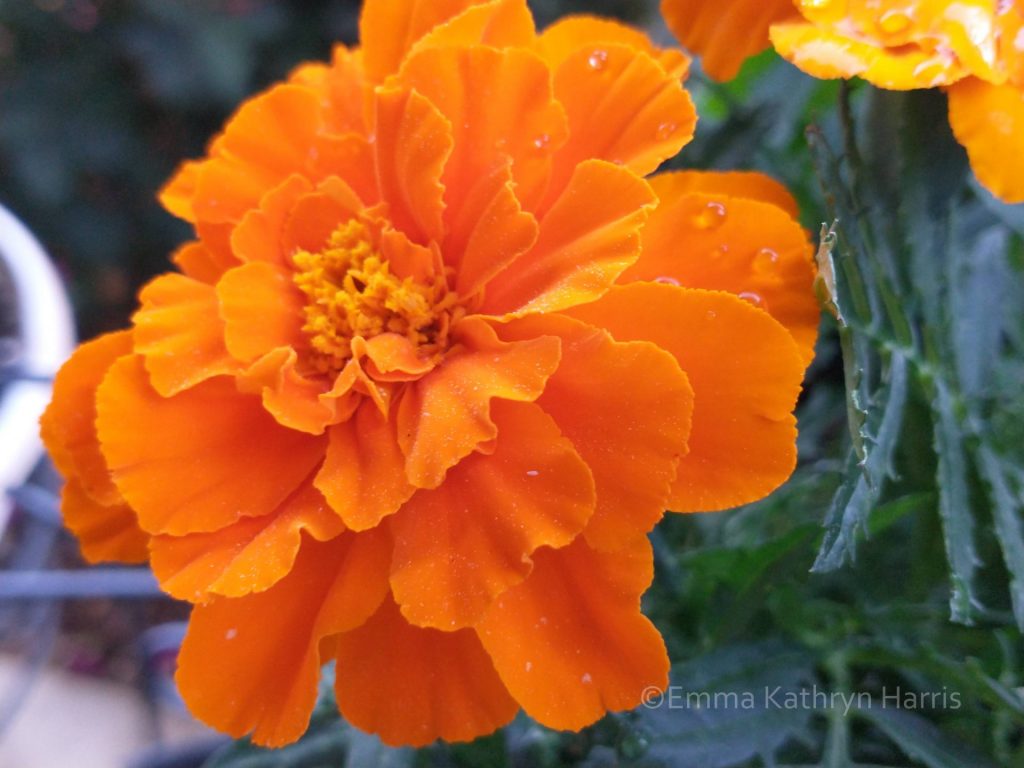Mistress Mary, quite contrary,
Frances Hodgson Burnett, author, The Secret Garden
How does your garden grow?
With Silver Bells, and Cockle Shells,
And Marigolds all in a row.”
Marigolds (Tagetes) seem to be one of those staple flowers, the kind most often seen in many gardens. Admittedly, marigolds have not been one of my favorite flowers, as their design never seemed to wow me, and until this year, I never added them to my garden scheme.
Marigolds have many uses, one of which includes being touted as a natural insect repellent. While gardeners often battle with natural elements, such as the sun, rain, frost and other environmental challenges that can wreak havoc on our plantings, pests are another ecological headache that can cause damage to our hard work.
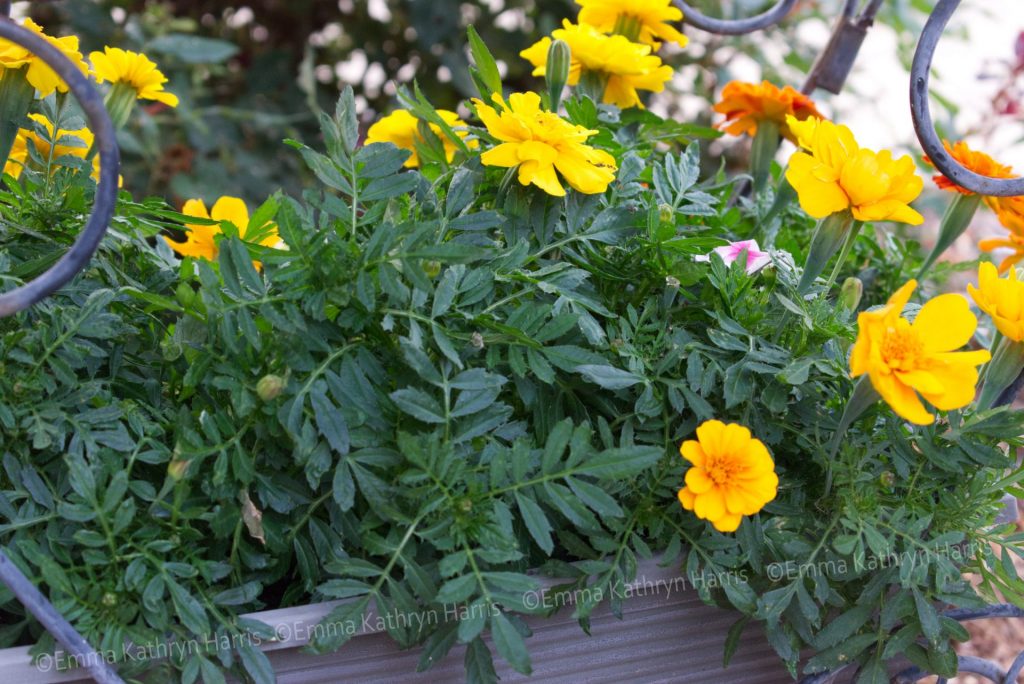
Many of us seek to garden organically. That means, chemical pesticides are not used to kill weeds and insects. While that contributes to the health of our gardens—and us—our flora becomes a haven for pests who seem to desire organic matter as well. More organic pesticide products are being manufactured, such as neem sprays (please do your research on what the sprays are used for, when to use them, and what they affect, such as pollinators), but prevention, as they say, is usually the best medicine.
That is where marigolds enter the stage.
Growing marigolds
Marigolds, as most flowers, come in a variety of color and design. Currently, I am growing two varieties in my containers—French marigold (Tagetes patula) which derive from Mexico and come in red, orange and yellow; and your familiar gold marigold. My marigolds have bloomed in gold, yellow, red, and combinations of mahogany, orange and yellow. I have discovered that marigolds are striking after all.
Marigolds are easy to grow, and they expand and spread, depending on where you plant them. They are excellent for container gardening and window boxes, but are also used as borders in the garden and can be planted throughout your garden. Whether you plant them in containers or the ground, know that they will develop fully and even take over the area where you planted them. One blossom can easily turn into a bush.
They are annuals and last through the summer and into the fall until the first fall frost. Deadheading the spent blossoms, or snapping or cutting them off when they have wilted, will help them continue to blossom and last for months. Marigolds love sun and well-drained soil, so keep this in mind when deciding where to grow them.
They grow 12 to 18 inches high and 2 feet across, although there are some varieties that can grow as much as four feet high. French marigolds are typically smaller, and can grow from 6 to 18 inches high.
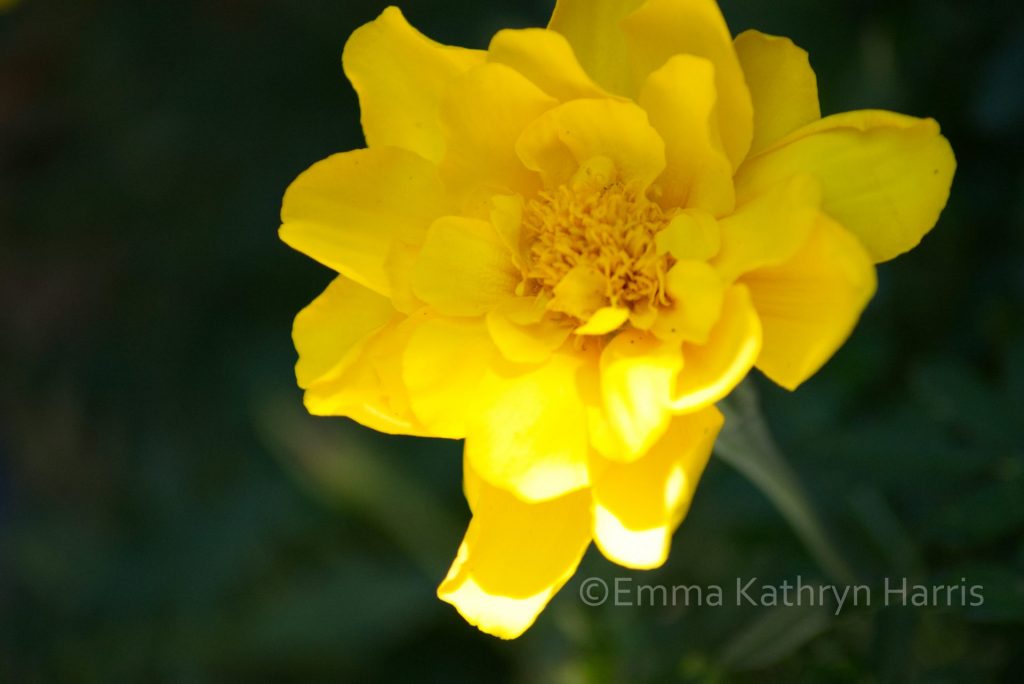
It has also been observed that starting your marigolds—just like any of your plants—indoors from seed and planting your seedlings outdoors after the frost, will strengthen your marigolds’ immune system, if you will, to fight their pests. In other words, it is not only cheaper, but healthier to your plants to grow them from your own seeds.
Marigolds—The natural insect repellent?
Because they are considered a natural pest repellent, you will want to plant them throughout your garden to ward off the little beasts. Marigolds have a reputation for repelling many insects and nematodes (worms), so spreading them among your other flowers and vegetables could help in aiding your insect control.
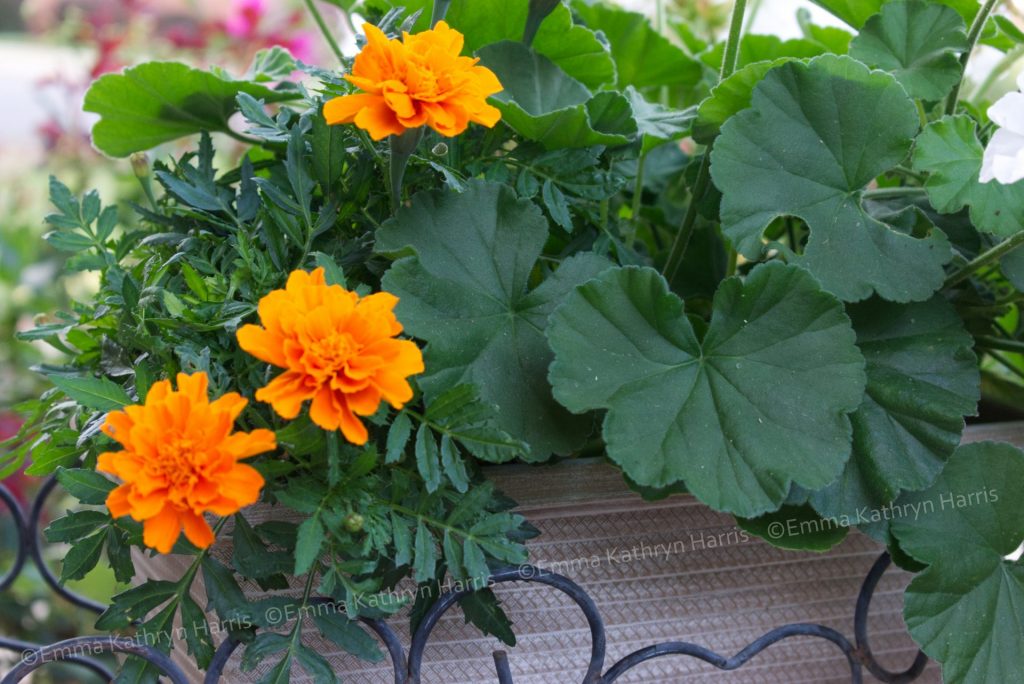
The book, “Rodale’s Basic Organic Gardening, A Beginner’s Guide to Starting a Healthy Garden,” by Deborah L. Martin, points out that “French marigolds, especially the cultivars “Nemagold,’ ‘Queen Sophia,’ ‘Petite Blanc,’ or ‘Tangerine,’” are the better varieties in repelling harmful nematodes.
Planting marigolds in your containers with other flower varieties can also assist in keeping the pests away from your other plants.
Also, most marigold varieties have a strong scent. This is an asset if you have trouble with squirrels. If they are digging in your garden or your containers, planting marigolds throughout the garden or in those containers can help because the strong perfume repels the furry rodents. My containers that house marigolds are the only containers the squirrels seem to avoid.
Marigolds attract beneficial pests, such as ladybugs and pollinators, that can also help control the nefarious bugs.
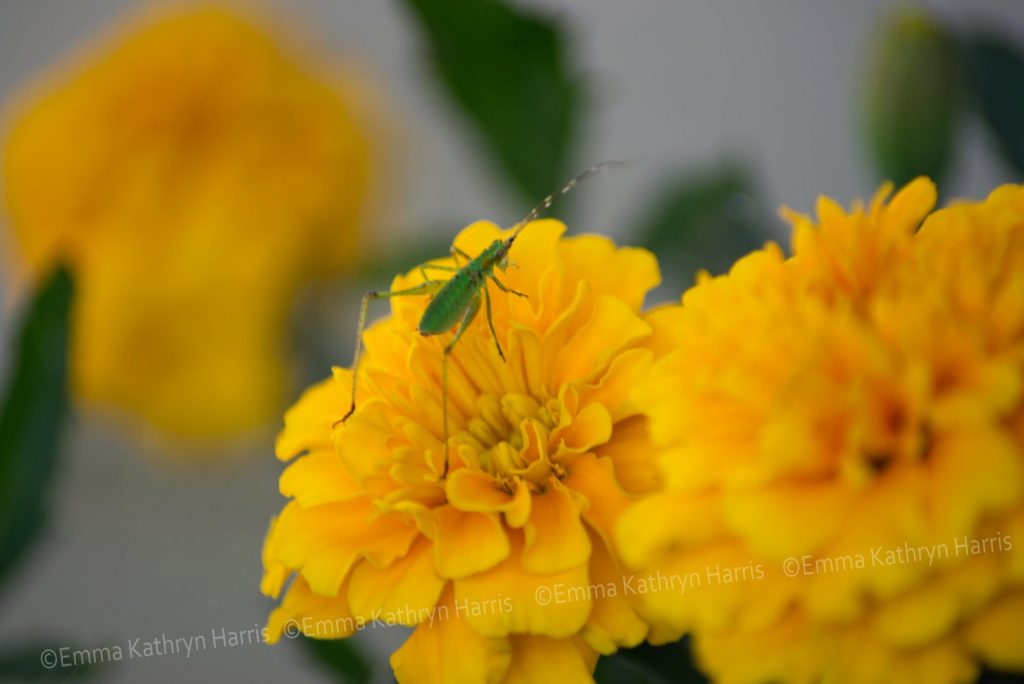
While gardening remains a continual experiment, avoid getting discouraged if you do not see immediate results. The reason behind “why” marigolds are seen to be a pest repellent are still debated. But there is scientific evidence that they are effective against nematodes. The variety of marigold, when they are planted, where they are planted in relation to your other plants, the type of soil—all these factor into the effectiveness of the marigold’s repelling power.
With that said, marigolds have their own pests to contend with, such as aphids, a personal threat to my garden.
While marigolds alone will not be your garden savior, they can still be enjoyed as they brighten your garden and your mood.
Quick tip: For a list of marigold varieties that grow best in your USDA zone, visit your state and county cooperative extension websites where they will provide detailed information and growing tips.


